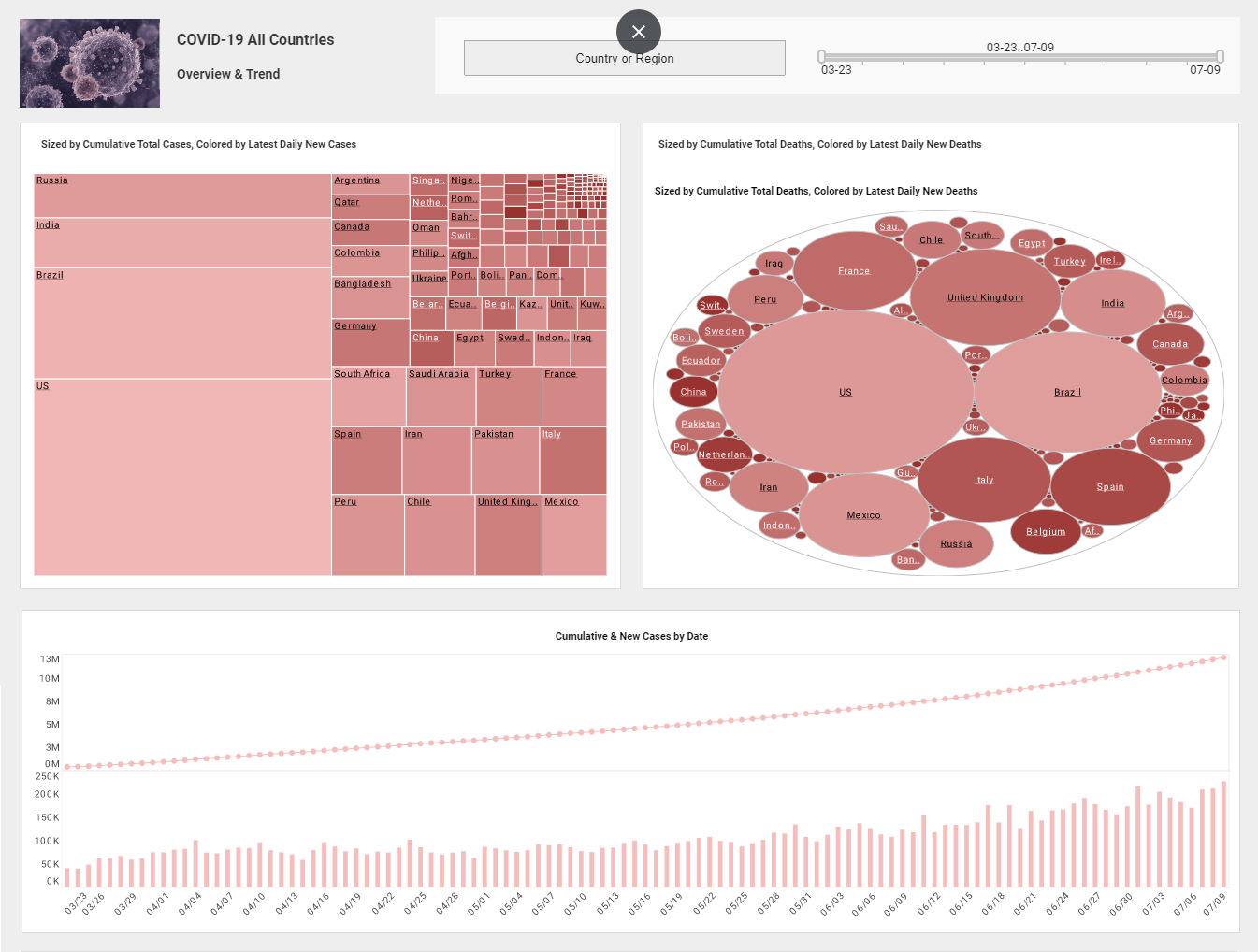InetSoft BI Webcast: A Business Intelligence Software Discussion
A continuation of eBizQ's Business Intelligence in Action Podcast
Goldstein: OK, thank you. Next Mark, you have spoken about an aspect of business intelligence that none of our other panelists spoke about today, that’s the garbage in garbage out problem of business intelligence. You talked about managing both structured and unstructured data and different sources, and how to put it into a data warehouse, and this is another area, since IBM is so large, you have all the different applications, can you talk about how this aspect works? How do you see all this working with the different pieces.
Andrews: Uh, well, absolutely. And I think this is the critical part. I think someone else mentioned how right now organizations are having to spend a lot of their resources on the integration of these different components and now are looking for complete BI platforms that can address all the BI needs they have.
And what we find is that oftentimes we have found that business intelligence efforts are not successful, not because of the BI tools, themselves, necessarily, but because of the data they are forced to leverage and use. BPM solutions are oftentimes not successful, not because of the business intelligence technologies themselves, but because of the information made available to users to make their decisions.
| #1 Ranking: Read how InetSoft was rated #1 for user adoption in G2's user survey-based index | Read More |
And that’s why it is so important to have a holistic picture that addresses all of the different aspects of a BI solution. Because there is no such thing as a standalone BPM or BI solution. BPM tools are used to manage and enable you to drive specific business activities which require you to leverage information coming from across your organization.
And that’s why having the ability to aggregate and cleanse information across these different environments becomes so important. In addition, and what we have seen is, I think one of the other gentlemen referenced that organizations are beginning to create separate operational data stores, set up different data marts and data warehouses to support all the needs they have across an organization.
And that is causing increased cost for organizations, also. And the drive behind dynamic data warehousing, we’re seeing and hearing from everyone on this call is that there is an increased need for analytic tools within various different business applications. In addition what that means is companies are starting to increase the usage of data warehouses and data marts and operational data stores that they have been creating across their organization, which is placing new demands, new demands that traditional warehouses are not able to address.
And that is why companies need to these dynamic data warehousing solutions so that they have the ability to support these mixed workload environments, recognizing that a user using a back office analytic application or management report has different response needs than a call center user that is running a production report or needs information to address a customer when they have that customer on the phone.
So it is being able to provide a complete BI platform that can address all those different needs across the business, because you’re not achieving operational business intelligence, unless traditional strategic and tactical planning is supported across the entire organization.
Goldstein: Well I think we’re out of time for today, and I would like to thank all of panelists very much for talking with us today. We have an interesting mix here. We have heard from the pure play BI vendors who sell best of breed BI tools and we’ll make business intelligence operational by integrating with processes.
 |
View live interactive examples in InetSoft's dashboard and visualization gallery. |
We have heard from a BPM vendor that said, well, we can integrate with the business intelligence tools, and somebody saying what you want is a complete BI platform so you don’t have to integrate all the pieces. So we are going to keep this conversation going, and I hope you’ll join us for future podcasts. Please join us for the eBizQ BI in Action virtual conference. Again, July 20th and 21st. This is Beth Gold-Bernstein thanking you for joining us today.
Previous: Operationalizing Business Intelligence

